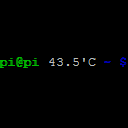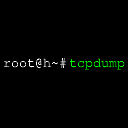I’ve put up a second tool: URL Decoder/Encoder. This allows you to convert URL encoded characters (for example a space becomes %20) back and forth.
Category: Systems
Before we dive in, let me preface by stating that there are obviously pre-built firewalls (both free and commercial) which will be much more performant and secure. However, this should not stop you from building your own firewall: it’s both fun and educational! I’ll be using a Raspberry Pi to build the firewall, but you can use any Linux based OS.
Continue readingIf you’re curious what temperature your Raspberry Pi is at, but don’t feel like running a constant temperature monitor, you can modify your prompt to display this dynamically. This is a very small modification to your .bashrc file, which should only take a minute.
Continue readingBeing handy on a terminal can be an enormous productivity boost and will make you feel like a proper hacker (as long as you’re typing in green on a black background).
Bash is by far the most popular shell available on Linux based systems, packed with extensive customization options for any environment. In this post, I’ll line up some of the shortcuts that’ll make your life quite a bit easier.
Continue readingUsing a SOCKS proxy allows you to encrypt all your web traffic between your machine and the proxy server, making it impossible for any local devices to inspect your traffic. Besides the obvious use-cases, this can often mean a significant impact on your browsing speed as it allows your traffic to exit from a different geographical location.
Continue readingIf you aren’t using the default locale on your Debian based system, you’ll often run into errors when running things on the command line such as apt-get or Perl. Fixing this is luckily rather trivial.
Continue readingNetcat is built into most if not all Linux distributions. It is an incredibly useful tool for quick network tests: to see if a device is reachable or a service is running. Seeing a “Connection refused” in netcat is in itself already valuable information as it could indicate that the remote host is reachable, but the service just isn’t running.
Continue readingWhen setting up Apache from scratch on a new server, and you create a new DocumentRoot for a new VirtualHost, you’ll often find yourself running into:
ForbiddenContinue reading
You don't have permission to access / on this server.
When troubleshooting an issue on any device where network connectivity is impacted, a packet capture is still king. This is not to say every 403 Forbidden error needs to be examined in Wireshark, but when a user reports their browsing saying the connection was reset or a timeout was hit, it might be time to fire up tcpdump.
Continue reading







